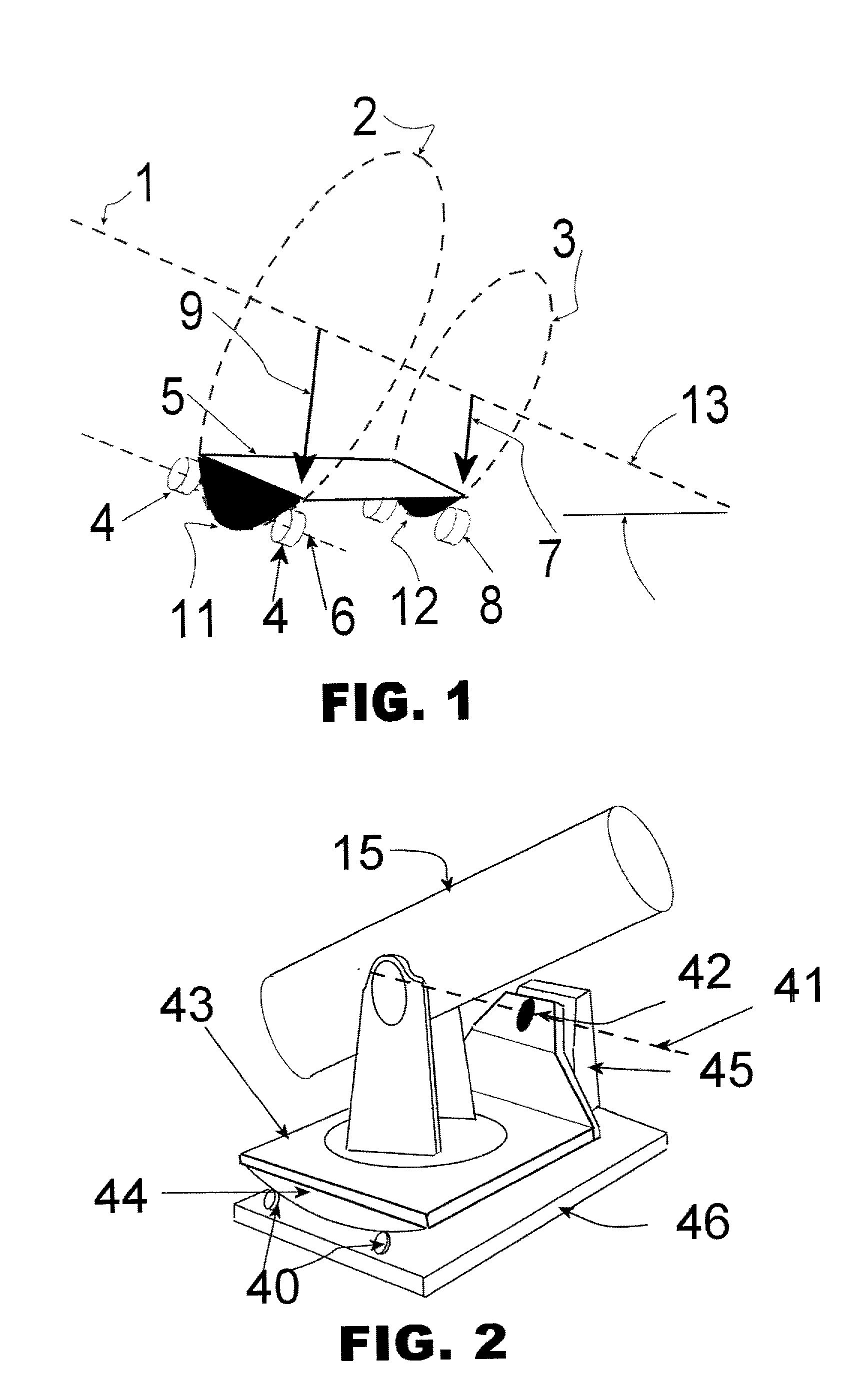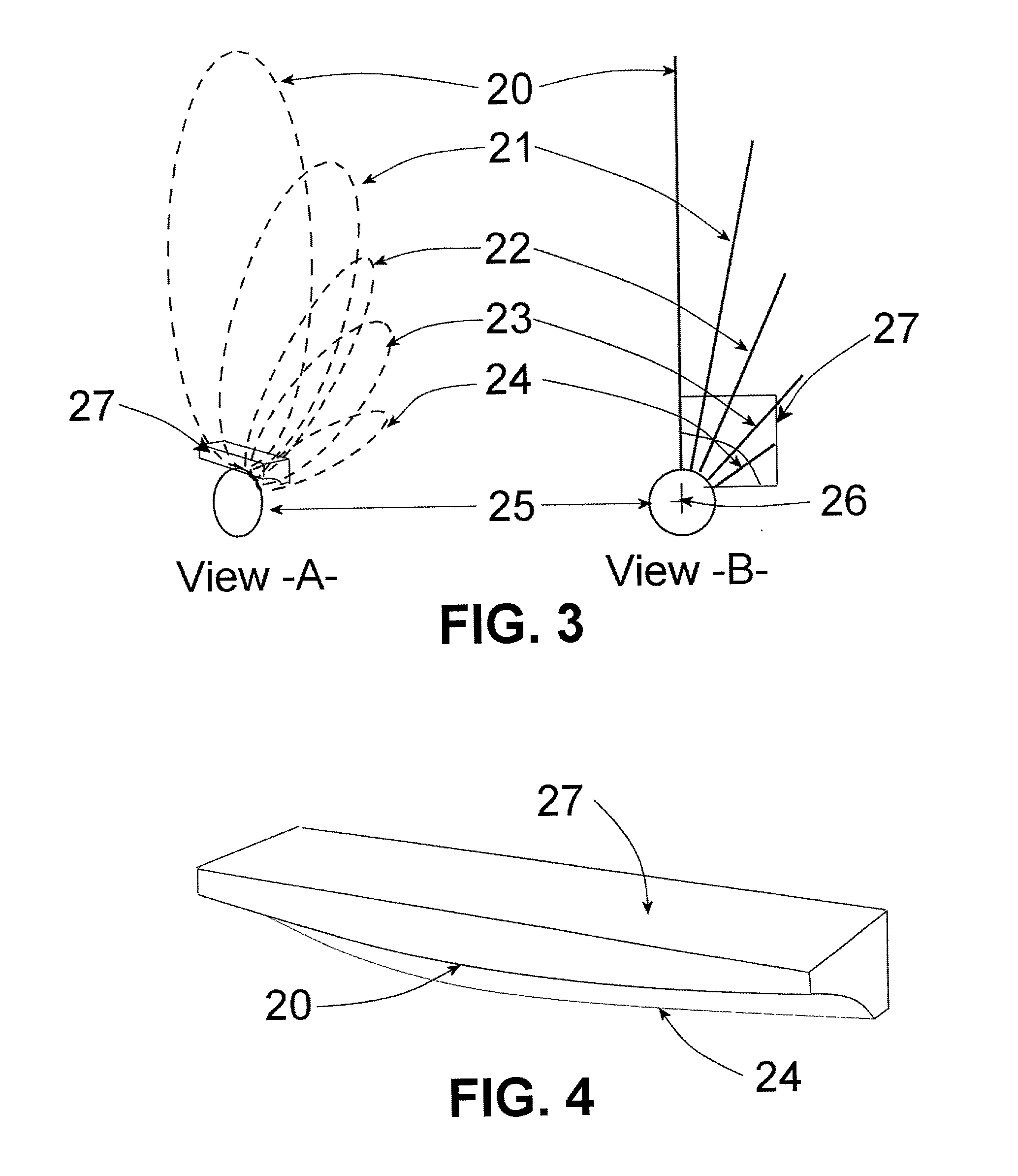Adjustable telescope tracking platform
a telescope and tracking platform technology, applied in the direction of direction/deviation determining electromagnetic systems, direction finders using radio waves, instruments, etc., can solve the problems of inability to automate tracking ability, large conventional mounting system, low cost of this type of telescope, etc., to achieve accurate tracking of celestial objects, easy adjustment, and high accuracy
- Summary
- Abstract
- Description
- Claims
- Application Information
AI Technical Summary
Benefits of technology
Problems solved by technology
Method used
Image
Examples
Embodiment Construction
[0018] The drawing describes the preferred embodiment of the present invention. While the configurations according to the illustrated embodiment are preferred, it is envisioned that alternate configurations of the present invention may be adopted without deviating from the invention as portrayed. The preferred embodiment is discussed hereafter.
[0019] Referring to FIG. 1, the principles of how an equatorial type tracking platform operates is illustrated. In order for an instrument to track celestial objects, it is necessary to rotate the instrument counter to the earth's rotational axis. Such an axis exists as a virtual axis 1, with the rate of rotation of top platform 5 being equal and opposite to the earth's rotational rate. The creation of virtual axis 1 can be seen to be created by virtual bearing surfaces 2, and 3, which have their centers of curvature aligned with 1. Only a portion of such bearing surfaces needs physically to exist. These real surfaces are the front bearing sur...
PUM
 Login to View More
Login to View More Abstract
Description
Claims
Application Information
 Login to View More
Login to View More - R&D
- Intellectual Property
- Life Sciences
- Materials
- Tech Scout
- Unparalleled Data Quality
- Higher Quality Content
- 60% Fewer Hallucinations
Browse by: Latest US Patents, China's latest patents, Technical Efficacy Thesaurus, Application Domain, Technology Topic, Popular Technical Reports.
© 2025 PatSnap. All rights reserved.Legal|Privacy policy|Modern Slavery Act Transparency Statement|Sitemap|About US| Contact US: help@patsnap.com



